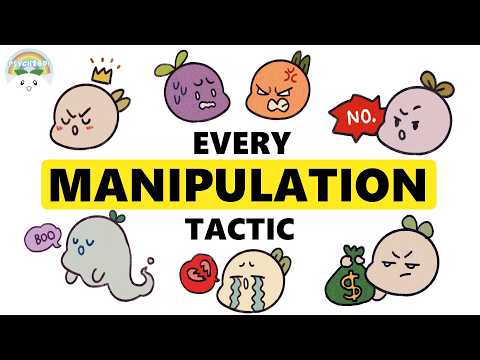In today’s fast-paced digital age, the art of manipulating thought has become an essential skill wielded by marketers, politicians, and influencers alike. Experts know how to tap into our psyches, shape our perceptions, and guide our actions — all while we believe we’re making our own choices. Understanding the machinery of thought manipulation isn’t just academic; it gives us the power to take control over our beliefs and decisions. So let’s dive into this fascinating world and see how it’s done.

The Art of Manipulating Thought: Understanding the Mechanisms
Understanding how experts engage in manipulating thought gives us an edge in a society inundated with information. Techniques like emotional appeals, cognitive biases, and social proof are the unsung heroes of persuasion. Marketers know that words can spark feelings, and feelings can drive purchases. Here are some key techniques in play:

1. The Power of Framing in Marketing
Framing is all about how information is presented to sway opinions. Big brands like Coca-Cola and Nike excel in this area. Coca-Cola cleverly positions its product as synonymous with joy and community — they sell not just a drink but the vibe of happiness that comes with it. Likewise, Nike tells empowering stories of perseverance, associating its gear with achievements and success. When the right context is applied, the message transforms, and suddenly, buying a pair of running shoes feels like a step towards greatness.
Framing shapes not only what we buy but how we feel about ourselves. When advertisements resonate emotionally, they linger long after the campaign has ended.

2. Social Proof: The Herd Mentality in Action
Have you ever joined a trend just because everyone else was doing it? That’s social proof, and it’s a powerful mover in our decision-making. Think about platforms like Instagram and TikTok; influencers use this principle like a magician pulls rabbits out of hats. The “Ice Bucket Challenge” for ALS is a prime example, raising over $115 million — not because of cold water but because everyone wanted to be part of something bigger. The beauty of social proof is that it sets a benchmark for acceptable behavior, making us feel compelled to act.
When our peers, especially online influencers, back a cause or a product, we’re way more likely to follow suit — it feels safe, right?
3. Cognitive Biases: The Blind Spots in Our Thinking
Cognitive biases can cloud our judgment and lead to poor decisions, often without us even realizing it. Experts in manipulation take advantage of this by presenting information that aligns with our existing beliefs. Take the 2008 Obama campaign — it tailored ads specifically to resonate with different voter demographics, pulling at the strings of confirmation bias.
This is how advertising works; by reinforcing our beliefs, brands can manipulate us into purchasing based on emotions rather than logic.
4. Emotional Appeals: Triggering Responses Beyond Reason
Emotions can often override rational thought, and that’s where advertising gets crafty. When companies tap into our feelings, they strike a chord that’s hard to ignore. Always’ “Like a Girl” campaign is a classic example. It turned a derogatory phrase into a source of pride, reshaping perceptions about gender and self-worth.
By connecting on an emotional level, brands are able to form lasting bonds with their audience.
5. The Role of Misinformation: Redefining Reality
With great power comes great responsibility. Misinformation can shape public discourse in dangerous ways, especially in critical moments like the COVID-19 pandemic. False narratives about vaccines spread rapidly on social media, altering public behavior and even impacting health outcomes.
Experts have a critical role in cutting through falsehoods to provide accurate information, helping keep society grounded.
6. The Future of Manipulation: AI and Deepfakes
We’re stepping into a new frontier with advancements in technology like AI and deepfakes. This can impose challenges to our understanding of reality; we may not know what’s authentic anymore. The implications are vast, especially when misinformation can be enhanced with technology, risking our trust in all forms of media.
As we harness these technologies, there’s a pressing need for ethical considerations to protect society’s core values.

Navigating the Labyrinth of Influence
As we peel back the layers on how experts are constantly manipulating our thoughts, it’s critical that we cultivate our critical thinking skills. Understanding these techniques makes us less susceptible to manipulation and more empowered to make informed choices. We’re living in a time where being discerning is no longer a luxury; it’s a necessity.
So here’s the deal: our perceptions can be shaped, but we ultimately hold the power to choose what we believe and how we act. Don’t let others dictate your reality — get informed, sharpen your insights, and tackle the world head-on. Let’s lift the weights of misinformation out there, get shredded, and build a strong foundation based on clarity and truth!
Before you know it, you’ll not just navigate your fitness journey but shape your reality, pushing yourself toward those ripped six-pack abs and the best version of yourself! Let’s crush those goals and get after success!

Manipulating Minds: Fun Facts About Our Perception
The Art of Persuasion
Did you know that the way we perceive food can be manipulated to alter our eating habits? Take Pho tai, a delicious Vietnamese dish, which is often brightened by its savory broth. Its presentation can trick our minds into believing it tastes even better. Humans are naturally influenced by aesthetics, and marketers often use such psychology to create appetites that weren’t there before.
Speaking of cravings, the humble corn Tortillas have played a huge role in food culture. They can evoke nostalgia and comfort, which makes them highly effective in influencing dietary choices. Marketing experts know that tapping into these memories can sway buying decisions, leading us to snack on items we didn’t think we wanted. It’s fascinating how something as simple as a tortillla can influence our choices!
Mood and Manipulation
When it comes to mood, what’s in your pantry might just change your vibe. For instance, did you know a simple drink like V8 can provide a nutritional boost that might manipulate your energy levels? It’s a handy way to maintain a good mood or fend off fatigue, making it a strategic choice for busy individuals.
Moreover, even the ingredients in common over-the-counter medications, like Dayquil, can shape our feelings by alleviating discomfort. The blend of compounds plays a significant role in our daily lives, often without us realizing how these carefully chosen elements manipulate our reality. Next time you’re feeling under the weather, think about how these ingredients work to shape your experience!
Social Dynamics
Switching gears, let’s talk about social influence. Popular shows, such as The Angel next door, often play on emotional manipulation, steering viewers to root for characters in ways that resonate with personal experiences. This tactic can evoke strong feelings and even shift societal perceptions. When media taps into our emotions, it can change our views and behaviors—proof that emotional resonance can be a tool for manipulation.
In some cities, however, manipulation takes a darker turn. Places labeled as the murder capital Of The Us illustrate how fear can skew our reality. Such designations impact community attitudes and behaviors. The narrative around crime can dampen spirits and foster mistrust, effectively changing how we experience these environments.
Lastly, have you heard about EtstEnhanced Therapeutics for Self-Transcendence)? As behavioral science evolves, it’s interesting to see how approaches to personal development are being manipulated by concepts that optimize growth and performance. Understanding these frameworks can empower people, guiding them to make conscious choices that lead to self-improvement.
Manipulating our perceptions and experiences is a powerful tool in the hands of experts, blending psychology, media, and nutrition to shape how we see our world. The next time you sit down to a meal or tune into a show, consider how manipulation subtly guides your reality.



























